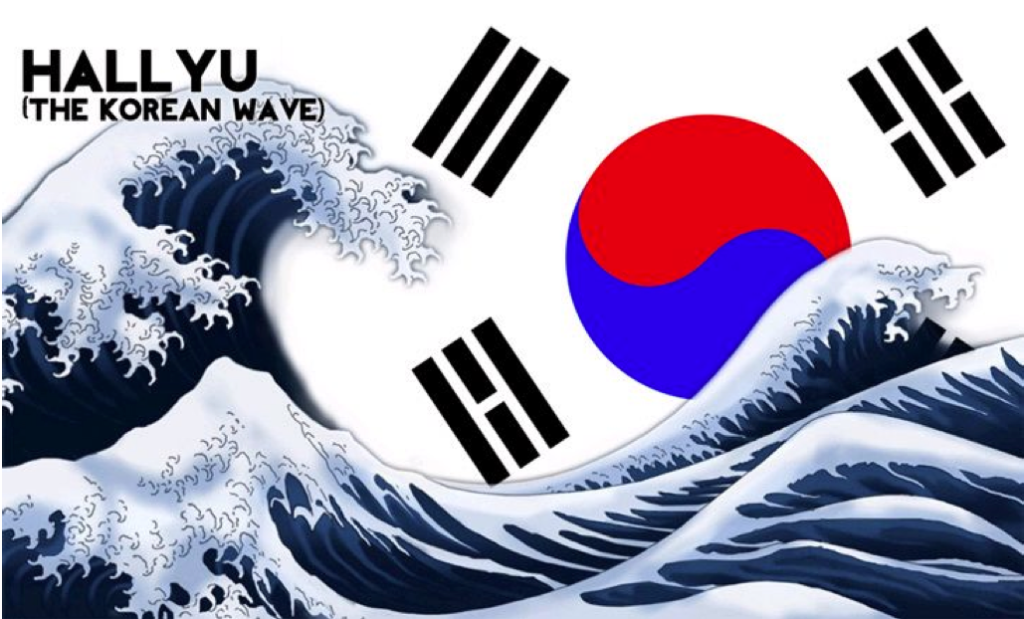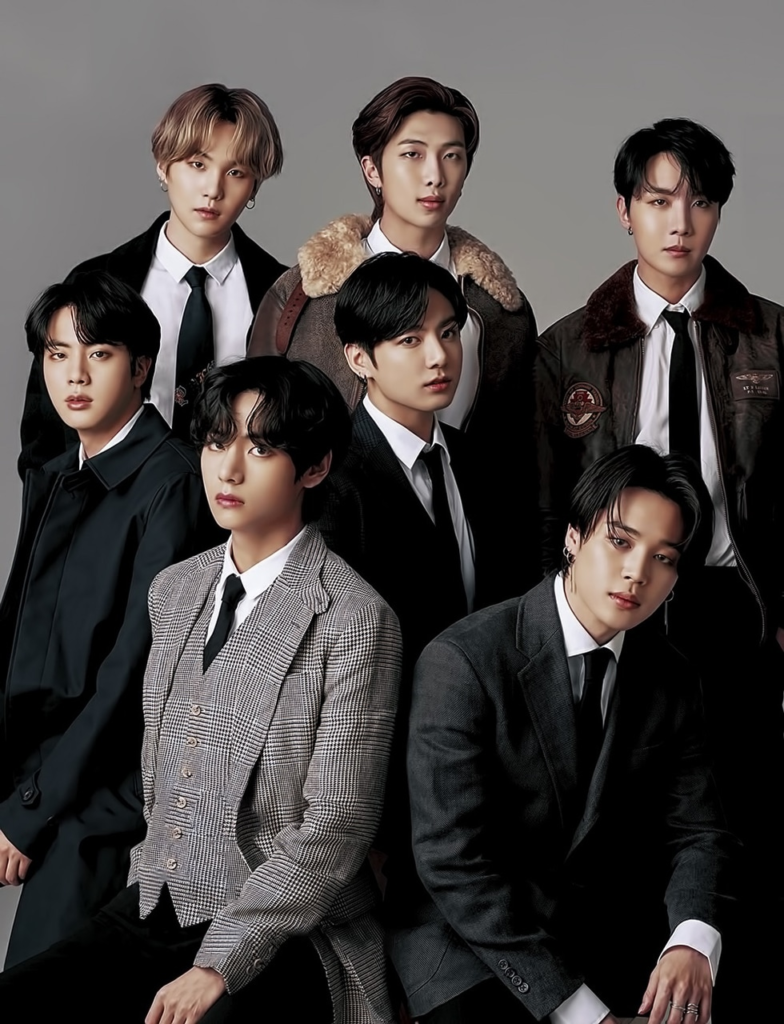
Annyeonghaseyo!
Confused, right? It translates to “hello” in the Korean language. Such greetings have become common for the Indian tongue with the passage of time. One must be living under a rock if they are not aware of the surging influence of Korean culture across the globe, needless to say, even in India.
It has disseminated so much that there is an official term for it: “hallyu”- a Chinese term which literally translates to the ‘Korean Wave’. It refers to the global dominance of Korean culture and pop culture through Korean movies, TV series (popularly known as K-drama), pop music (K-pop), to name a few. A by-product of the popularity of the aforementioned is the increased interest in Korean culture, tradition, language, and their food. It is noteworthy that the Hallyu has had a positive spillover effect in the Korean economy as well.
The origin of the Hallyu can be traced back since the 1980s. It found its ground mostly in the 1990s. The Asian financial crisis of 1997-98 made the Korean government steep into debt and loans which left their global image rather injured. Unlike popular assumption, the outburst of the Hallyu was not spontaneous or unplanned.
During the turn of the century, the Korean government thereon systematically and arduously took efforts to improve their image. It is one of the few countries that has a Ministry of Culture; and within this ministry the Popular Culture Industry Division particularly takes care of pop music, fashion, mass entertainment, comic books, cartoons, and other key aspects. It is one of the countries whose zeal is to be one of the largest exporters of popular culture in the world and thereby establish their ‘soft power.’ As Danish author Martin Roll explains, ‘soft power’ is a popular term coined in 1990 by Harvard political scientist Joseph Nye. It refers to the intangible power a country wields through its image, rather than through hard force. Hard force refers to military power or economic power.”
The “Korean Wave” found its genesis in India in the early 2000s in the north-eastern states of Manipur and Mizoram. The Revolutionary People’s Front banned Hindi movies and TV channels in 2000 which spurred the spotlight on pirated DVDs of Korean films. Soon the local channels took cue and started airing Korean TV channels like Arirang TV and KBS World which formed the foundation for Hallyu to take off in India. The presence of people from North-Easterners in the mainstream Indian film and entertainment industry is almost nil. This proved to be another factor that helped them to turn to Korean popular culture more.
With the onset and burgeoning of internet and social media thereafter, the reach and influence of K-drama and K-pop has enhanced exponentially with different names being ascertained to various waves: Hallyu 2.0- the new Korean wave that started around 2007 and Hallyu 3.0- the third generation that started from the mid-2010s and continues to the present day.
The rest of the Indian subcontinent got exposed to Korean language education and studies when the Korean Chaebols (large industrial conglomerates run by South Korean owners/families) and their enterprises started investing in India. Universities like that of Jawaharlal Nehru University, University of Madras, University of Calcutta, and University of Delhi had theatre groups having personal interactions with Korean directors.

In 2006, TVS Motors and Hyundai formed a non-profit organisation called India-Korea Cultural Centre (InKo centre) to bridge the gap between both the countries and its people. InKo promotes languages, cultures, foods, traditional arts, exchange of hip-hop artists, authors, potters, painters, theatre troupes between Bengaluru, Chennai, Delhi, and Seoul. The Government of Nagaland and Republic of Korea came together to hold music festivals at Kohima, and even during the famous Hornbill festival. The Korean Cultural Centre India (KCCI) especially helped in the promotion of Korean pop music and dance by organising various music festivals and competitions across the country. They even partnered with Arirang TV and KBS World to increase the exposure of K-pop and K-drama manifold and decrease the gap between the two countries. The popularity of the song ‘Gangnam Style’ by PSY in 2012 officially brought K-pop upfront, not only in India, but also worldwide. The International Film Festival of Kerala (IFFK) even saw South Korean Directors like Park Chan-wook, Kim Ji-Woon, and Kim Ki-Duk being invited to the festival, indicating the absorption of South Korean pop culture and exploration of the same.
K-dramas, especially in recent years, and also owing to the pandemic, have found a huge fan-base across India. Their relatable content, storylines, luring soundtracks, and superior visual and production quality are major aspects that have made them a rage. A large number of fandoms based on these dramas have sprouted all around the nation. Names like Song-Joong-Ki, Jung Hae-In, Kim Woo-Bin, Son Ye-Jin, Hyun Bin, Gong Yoo, Kim Go-eun and many others have become household names in India. Indian platforms like Zee5 and MX Player have had to dub Korean shows into Indian languages due to increasing demand for them. Netflix India saw a spurt in the viewership of Korean drama by 370 percent in 2020 with even Bollywood stars acknowledging them and professing to be ardent fans of the same.
The K-drama fandoms not only laud the Korean popular culture, but also come together during times of need like the pandemic to generate funds. During the pandemic, IIM alumni K-drama fan-group called ‘The Drama Kweens’ came together and donated money to the Mumbai dabbawalas as they had lost their jobs. The famous K-pop band BTS’s fans, famously known as BTS Army, were able to generate a whooping two million Indian rupees within 24 hours and donated to the patients affected by COVID-19.

The growth of fandoms translated to the orchestrated growth of interest in Korean language, fashion, food, skin care, culture, history, and tradition. Music streaming platforms like Spotify have reported in 2020 that BTS became the fourth most streamed boyband in India. K-pop and Korean language related podcasts also came to be highly streamed on Spotify. Korean restaurants serving Korean food are being established all over the major cities of India with fans increasing their demands manifold for food they see in their favourite K-dramas- from kimchi to tteokbokki to ramyun to soju to jjamppong.
Online Korean products shopping site, Korikart had their sales increase by 300 percent between the months of March and December of 2020. Korean skincare regime has become the go-to for all genders. Korean companies like Innisfree and The Face Shop have cemented their place in the Indian market. Sites like Nykaa have a dedicated K-beauty section on their online sites, applications, and even stores. Many home-grown brands like Dot and Key, Juicy Chemistry, Mamaearth, Wow Skincare are taking inspiration from Korean skincare and introducing themselves in the Indian market with Indian natural ingredients. Language learning application Duolingo reported an average of 236 percent increase in enrolment ratio for learning Korean language. Due to cultural similarities in language, food, tradition, words, syllables, habits, behaviour, and manners, more of the younger generation can be found effortlessly adapting and harmonizing to the Korean way of living. So much so that with a joint recommendation by the KCCI and the South Korean embassy, the Korean language was added a choice of second language by the Ministry of Education in the National Education Policy of 2020. The director of InKo centre, Rathi Jafer is researching the similarities between the Korean language and South Indian languages; starting from the similarities in phonetics like omma and oppa (mother and father) in Korean mean the same in Tamil. He articulates how it is fascinating to study and research the same as both the languages come from different language families.
Therefore, in conclusion, it is safe to say that the whirlwind of Hallyu has hit the Indian subcontinent like never before, especially during the pandemic, and it is here to stay. According to a 13th century Korean chronicle, Samguk Yusa, apparently there is already a connection between India and Korea through a legendary queen-Heo Hwang-ok, Princess Suriratna. The chronicle elucidates that she came to Korea on a boat from the distant land called “Ayuta” (believed to be Ayodhya) and got married to King Suro of Geumgwan Gaya. Therefore, if this fact is true, it is to be believed that more than six million present-day Koreans, like the clans of Gimhae Kim, Heo, and Lee, can trace their lineage back to being the descendants of her twelve children with King Suro. If this historical theory is to be proven to be a fact, then Indo-Korean relations and Hallyu will find its permanency in both nations likewise. Nonetheless, with the advent of technology and accessibility being at finger-tips, it is impossible to resist the spell of the Hallyu. Surely it has made our lives a little heart-warming during these trying times. To end on a thanking note- kamsahamnida, Hallyu!
Smriti has done her BA in Literature from Hindu College, Delhi University and MA in Literature from Jamia Millia Islamia University. She is also an Alumna of SBI Youth for India Fellowship.
In a room of her own, you will often find Smriti speak to spectral masked vigilantes who save the world of mortals during nocturnal hours. As a sensorial hybrid, she believes in the sight of bright colours, sound of mountain rivers, loving touch of jumping puppies, and fragrance of old books. Smriti aspires to work as a teaching faculty to create a dialogic classroom space with vibrant discussions.


Fascinating to learn about the history and connection between the two countries.
gong-yuhae jusyeoseo gamsahabnida ( thank you for sharing )
I thought you were going to chip in with some decisive insigth at the end there. Not leave it with we leave it to you to decide
I’m gone to convey my little brother, that he should
also visit this blog on regular basis to obtain updated from latest gossip.